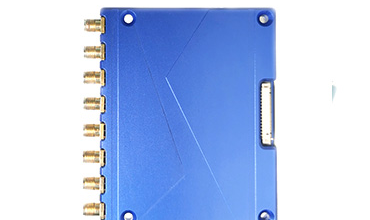How RFID Changed A Warehouse Management System

RFID is a powerful, low-cost technology that has the potential to revolutionize supply chain management by enabling automatic identification and tracking of both people and goods, thereby reducing errors and the need for manual labor. This article may focus on RFID warehouse management, read more if you are interested.
How does RFID work with a warehouse management system?
To understand how RFID works with a warehouse management system, it is important to first understand what RFID is and how it works. RFID stands for Radio Frequency Identification. It is a technology that uses radio waves to identify and track objects. RFID tags are attached to objects and contain information that can be read by an RFID reader.
RFID tags are used in a variety of applications, including inventory control, asset tracking, and security. When used in a warehouse management system, RFID tags can help track inventory levels, locations of assets, and movements of products throughout the warehouse.
RFID readers are used to reading the information stored on RFID tags. Readers can be handheld or fixed, and they connect to a computer or network wirelessly or via a cable. When an RFID reader is used in a warehouse management system, it can help track inventory levels, locations of assets, and movements of products throughout the warehouse.
Benefits of RFID in the Warehouse Management System
RFID (radio frequency identification) is a technology that uses electromagnetic fields to automatically identify and track objects. RFID tags are typically made up of an integrated circuit and an antenna, which is used to transmit data to a reader.
RFID has many benefits over traditional barcoding systems, including the ability to track multiple items at once, a longer read range, and faster data collection. These benefits make RFID an ideal technology for use in warehouse management systems.
One of the biggest benefits of using RFID in a warehouse management system is the ability to track multiple items at once. With traditional barcoding systems, each item must be scanned individually, which can take a lot of time. With RFID, however, multiple items can be tracked simultaneously, which can save a significant amount of time.
Another benefit of RFID is its longer read range. RFID tags can be read from up to several feet away, while barcodes must be scanned directly to be read. This allows for quicker data collection since workers don’t have to stop and scan each item.
Finally, RFID data collection is generally much faster than barcode data collection. This is since RFID tags can be read much more quickly than barcodes. This can help to improve efficiency in the warehouse by reducing the amount of time needed to collect data.
Conclusion
To summarize, RFID has helped to change warehouse management systems by making the process of tracking inventory more efficient. In addition, RFID has also helped to improve safety in the workplace by reducing the amount of time that workers spend handling merchandise. Overall, RFID has had a positive impact on warehouse management systems and is likely to continue to do so in the future. If you are also interested, the affordable Hopeland RFID readers should be the best choice.





